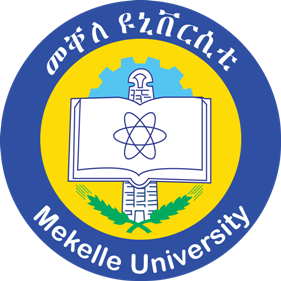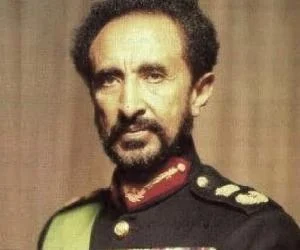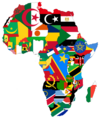
Tertiary education, also referred to as third-level, third-stage or post-secondary education, is the educational level following the completion of secondary education. The World Bank, for example, defines tertiary education as including universities as well as trade schools and colleges. Higher education is taken to include undergraduate and postgraduate education, while vocational education beyond secondary education is known as further education in the United Kingdom, or included under the category of continuing education in the United States.

Italian East Africa was an Italian colony in the Horn of Africa. It was formed in 1936 after the Second Italo-Ethiopian War through the merger of Italian Somaliland, Italian Eritrea, and the newly occupied Ethiopian Empire.

Asmara, or Asmera, is the capital and most populous city of Eritrea, in the country's Central Region. It sits at an elevation of 2,325 metres (7,628 ft), making it the sixth highest capital in the world by altitude and the second highest capital in Africa. The city is located at the tip of an escarpment that is both the northwestern edge of the Eritrean Highlands and the Great Rift Valley in neighbouring Ethiopia. In 2017, the city was declared as a UNESCO World Heritage Site for its well-preserved modernist architecture. According to local traditions, the city was founded after four separate villages unified to live together peacefully after long periods of conflict. Asmara had long been overshadowed by nearby Debarwa, the residence of the Bahr Negash or the governor of the coastal province, however it still existed as a major settlement for over half a millennium and enjoyed some importance as it stood on the trade route to Massawa. Asmara first rose to prominence during the 20th century, when it became capital of Italian Eritrea. Under Italian rule the city of Asmara experienced rapid urbanization and modernization.

Girma Wolde-Giorgis was an Ethiopian politician who was the president of Ethiopia from 2001 to 2013. He was the second person to hold the office of president since the founding of the Federal Democratic Republic of Ethiopia in 1995.

Addis Ababa University (AAU) is a national university located in Addis Ababa, Ethiopia. It is the oldest university in Ethiopia. AAU has thirteen campuses. Twelve of these are situated in Addis Ababa, and one is located in Bishoftu, about 45 kilometres (28 mi) away. AAU has several associated research institutions including the Institute of Ethiopian Studies. The Ministry of Education admits qualified students to AAU based on their score on the Ethiopian University Entrance Examination (EUEE).

Education in Eritrea is officially compulsory between 7 and 16 years of age. Important goals of Eritrea's educational policy are to provide basic education in each of Eritrea's mother tongues as well as to produce a society that is equipped with the necessary skills to function with a culture of self-reliance in the modern economy. The education infrastructure is currently inadequate to meet these needs.
Articles related to Eritrea include:

The Ethiopian Navy, known as the Imperial Ethiopian Navy until 1974, is a branch of the Ethiopian National Defense Force founded in 1955. It was disestablished in 1996 after the independence of Eritrea in 1991 left Ethiopia landlocked. In 2019, the Ethiopian Navy was re-established based in Bahir Dar, Amhara region, near Lake Tana.

Mekelle University is a higher education and training public institution located in Mekelle, Tigray Region, Ethiopia, 783 kilometers north of Ethiopia's capital, Addis Ababa. Mekelle University is one of the largest public universities in Ethiopia. It has seven colleges, eight institutes, and more than 90 undergraduate and 70 postgraduate programs. The student intake capacity of Mekelle University has reached 31,000 or 10% of Mekelle's population.

The Ethiopian Catholic Archeparchy of Addis Abeba, officially the Metropolitan sui iuris Archeparchy of Addis Abeba is the metropolitan see of the Ethiopian Catholic Church, a sui iuris metropolitan Eastern Catholic Church.
The Baháʼí Faith in Ethiopia began after ʻAbdu'l-Bahá wrote letters encouraging taking the religion to Africa in 1916. Probably the first Baháʼí to settle in the country came in early 1934 and with further pioneers by mid-1934, the first Baháʼí Local Spiritual Assembly of the country was elected in November in Addis Ababa. In 1962, Ethiopia Baháʼís had elected a National Spiritual Assembly. By 1963 there were seven localities with smaller groups of Baháʼís in the country. The Association of Religion Data Archives estimated some 27000 Baháʼís in 2005. The community celebrated its diamond jubilee in January 2009.

Ethiopia–Italy relations are the current and historical relations between Ethiopia and Italy.

Italians of Ethiopia are Ethiopian-born citizens who are fully or partially of Italian descent, whose ancestors were Italians who emigrated to Ethiopia starting in the 19th century during the Italian diaspora, or Italian-born people in Ethiopia.

Menghesteab Tesfamariam, M.C.C.I. is an Eritrean Catholic prelate who has served as the Metropolitan Archbishop of Asmara and head of the Eritrean Catholic Church since 2015. He is a member of the Comboni Missionaries and has been a bishop since 2001.

Paulos Tzadua was the first Ethiopian Cardinal. He served as Archbishop of Addis Abeba and was the head of the Ethiopian Catholic Church from 1977 to 1998.
The Italian School of Asmara was a government-operated Italian international school located in Asmara, the capital of Eritrea. The school closed in 2020.
The Comboni Missionary Sisters are a Catholic religious institute originally founded under the name Pie Madri della Nigrizia, translated as the "Pious Mothers of the Nigritia" or "The Devout Mothers of Africa". They are also known as the Missionary Sisters Pie Madre della Nigrizia or the Missionary Sisters of Verona,
The following is a timeline of the history of the city of Asmara, Eritrea. Asmara was under Italian colonial rule from 1889 until 1941.

Opposition to Haile Selassie relied largely of internal administration of his country. While Haile Selassie made attempt to modernize the country and brought to global power since Italy's occupation in 1936–41, the later administration met with negative public attitude especially among educated people in universities and peasants.

Alessandro Triulzi is an Italian historian, Africanist and since 2011 Emeritus Professor of African History and former Vice Director of the African and Arab Studies Department at the Università degli Studi di Napoli "L'Orientale" at Naples. He studied Political Science at the Sapienza University of Rome for a Master's degree in 1966 and obtained a PhD in History at Northwestern University at Evanston, Illinois in 1981. Triulzi performed field work among the Ashanti people in Ghana (1969), and the Berta and Oromo people in Wallaga, West Ethiopia. He worked in Ethiopia, Sudan and Eritrea during 1970–1973, and again in Ethiopia during 1985–2005.


















